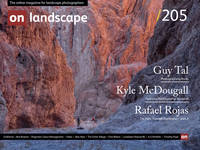One Century After the Struggle Between Pictorialism and Group f.64

Timothy Floyd
I am a full-time amateur photographer, having made my first photographs at age 13 and continuing now some 50 years on. I enjoy many genres, but mostly I enjoy the deliberate and contemplative aspects of landscape photography. I do not view myself as an artist, but rather I try to faithfully and aesthetically record the artistry, beauty and tragedy found in the world.
What is Real? How do you define Real? ~ Morpheus
Few topics in landscape photography generate as much emotional debate as digital post-processing. The fascinating thing about the current debate is that it closely parallels a similar debate that occurred nearly 100 years ago. Since Guy Tal pointed out that many photographers are unfamiliar with the history of photography as an art,1 this article will discuss that debate, where it led, and what we can learn from it.
Historical Context
The highly technical craft of early photography made it inaccessible to the masses. Mastery of the mechanics, chemistry, and optics of large, heavy, bulky and expensive equipment, not to mention coating glass plates and developing them in mercury vapours, was practised by only a few. Many saw photography as a technical craft used to record the world, whilst others tried to establish it as an interpretive art. Regardless, the number of practitioners was limited; most people did not own a camera.
That all changed in 1888 when George Eastman introduced the Kodak camera with the slogan, “You press the button, we do the rest.” Advertisements proclaimed, “No previous knowledge of Photography necessary.” Suddenly, overnight, anyone could take a picture and photography became a popular national pastime. Two years later, the less expensive Brownie camera democratised photography, reducing it to the snapshot, which further challenged the idea of photography as an art.
In response, professional photographers, who wanted to maintain control of “serious” photography, developed advanced techniques whilst making the exposure, as well as during developing and printing. These techniques, which were beyond the knowledge and capability of casual photographers, included the use of soft-focus lenses, physically altering the emulsion, and replacing the silver halide crystals in the emulsion with oil-based pigments. The idea was to give the images an ethereal, painterly quality to mimic the higher art and was called Pictorialism.

